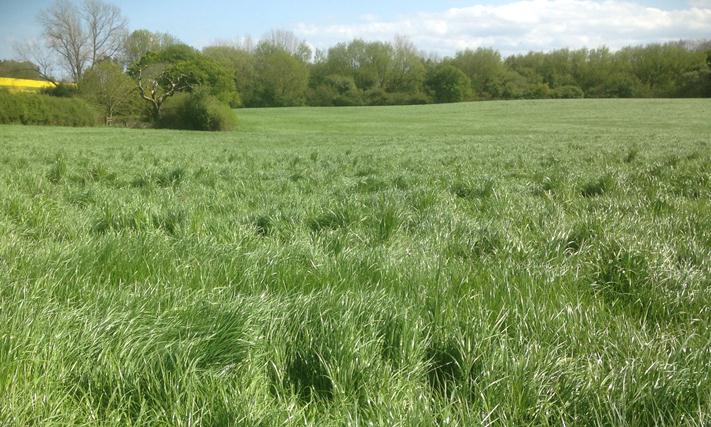Fortress - Mixture of the month
Long-term grass suits heifer-rearing dairy farm
Barclay and Jack Taylor have centred their pedigree dairy business on selling calved heifers to commercial dairy farmers, and rely on good grass - as grazing and silage, to produce top quality animals.
The Taylors farm 89 hectares (218 acres) at Webscott Farm in Myddle, near Shrewsbury. At peak times, there have been 500 cattle from day olds, through to calving heifers and the milking cows.
“We are on medium to heavy loam here and can certainly grow grass,” says Barclay Taylor. “It rarely burns up in summer, but can be wet. When it is, we need grass that is persistent and determined to survive.”
The Taylors reseed 15% of their farm each year, aiming to have the seed sown by the end of August. A sward lifter is used to encourage air into the soil, before the field is ploughed and composted farmyard manure applied. The field is then seeded with a long-term grass mixture.
“For the past three reseeds we have used Fortress from Oliver Seeds,” says Mr. Barclay Taylor. “This is a cutting and grazing ley of mainly late-heading perennial ryegrasses, with some meadow fescue and timothy, and we intend to keep it down for at least five years.”

Barclay Taylor’s long term cutting and grazing ley at the end of May 2016, sown 2013
(with no added fertiliser).
After the grass has germinated, the reseeds are sprayed for seedling docks and chickweed. Cheviot store lambs come in to graze from early November to the New Year, mob-stocked for seven to ten days and then moved on to the next area. This encourages the grasses to tiller and the sward thickens.
“The 32 acre field seeded last summer was cut on the 25 May and produced a very high yield, considering we didn’t put any fertiliser on it,” says Mr. Barclay.
A contractor comes in to mow the silage crop and the Taylors ted it and leave it to wilt for at least 36 hours, before picking it up with a forage harvester.
“We want to make high quality, high dry matter silage from the first two cuts and haylage from third cut, so using the right grasses is really important,” says Mr. Taylor.
“We believe the nutritional quality of the grasses in Fortress is very high, in particular the fibre element. Animals need to be able to digest the grasses to access their nutrition.”
White clover is broadcast into second cut silage aftermaths and then grazed by youngstock for seven to ten days. These are not cut again for silage in their first year, to allow the clover to establish.
“While the milk price has been so low, we have been fortunate to have the calved heifer side of the business to keep us going,” admits Mr Taylor.
“Having good grass to feed helps us produce the healthy, strong-bodied animals our commercial clients are looking for.”
